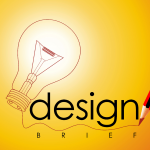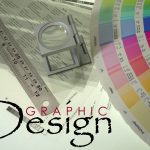
A computer capable of handling the performance needs of graphic design software will need to meet specific minimum specifications. Computers used for graphic design will need higher capabilities like processor speed, RAM disk capacity and the ability to expand. Not all computers or laptops are suitable for graphic designers and choosing the right one is an essential investment.
Technology is dynamic and evolving, but it can also be overwhelming. Let us take some of the stress off of you by explaining this more.
Hardware
Graphic designers have their own preference of what they consider to be the best computer. The equipment you choose will determine how well your computer can process the graphic design software. The most important features to focus on will be the graphics card, RAM, screen resolution, and hard disk speed.
Hard Drive
There are two types of hard drives, HDD and SSD.
- Hard Disk Drives (HDD): Internally, HDDs are metal disks with a magnetic coating which physically spin like a fast record player.
- Solid State Drives (SSD): SSDs consist of a series of memory chips and have no moving parts.
Both have their advantages and disadvantages. HDD hard drives are seemingly more affordable for the same amount of storage. They also have a higher ceiling for total storage. Ideally, the hard drive should run at 7200 RPM. The importance is the speed declines (5400 RPM) for external storage if files are stored without any software running on the external hard drive.
A hard drive with 1TB (terabyte) is sufficient; however, a 2TB would be better since storage needs constant expansions. SSDs tend to have a maximum capacity of 4TB and are more durable because they do not have moving parts. If you need portability, then an SSD hard drive may be the better choice. SSD’s also have higher speed which allows the computer to boot faster programs launch quicker, and data transfers faster when transferring to an external drive.
RAM
Random Access Memory (RAM) is the speed at which your computer can multitask. The more RAM your computer has, the better it can run multiple programs. Most all graphic design software requires an increased about of RAM during use. RAM which is mostly short-term memory and is what the computer keeps at the forefront. A minimum of 8Gb RAM is required. However, since the CPU cannot expand past the gigahertz range, it is better to purchase the largest RAM available; 16 GB or 32 GB is usually preferred. The clock speed of the RAM you choose is more important than the amount of GB you install. The minimum clock speed recommended is 1600 MHz.
Processor
The processor or CPU determines the performance of your computer. Aspects to consider before purchase are the brand, generation, clock speed, and cache memory size. AMD and Intel are among the fastest processors.
Motherboard
The motherboard you choose will determine how much your computer can grow. When it comes time to upgrade, your motherboard will need to be large enough that it carries this capability. Keep your future in mind when purchasing the motherboard.
Graphics Card
A graphics card, GPU, is a graphic designer’s most vital aspect. The better the GPU, the better the graphics performance you will receive.
Video Card
A video card is more in demand for a gamer than a graphic designer. If a laptop is used for graphic design, you can purchase an affordable video card to suit your needs. However, for most graphic designers RAM is more important than the video card.
Storage
The speed of your storage determines how fast your graphic design software will load. These programs take a lot of RAM and CPU to load.
Monitor and Screen Size
The screen resolution for a graphics computer should be at least 1280 x 800 or the higher the resolution, the better. Most monitors on the market are Twisted Nematic (TN) panels. Your screen displays your work; therefore, you want it to be precise. The size, aspect ratio and resolution all play a part in displaying the best of your graphic design work.
Power supply
The proper power supply is vital to the life of your computer and all of its hardware components. Using an uninterruptible power supply (UPS) will prevent damage to your hardware and the loss of your design work due to a power outage.
Portability
A graphic designer needs to space to work. Over the years, laptops have become lighter, more portable and batteries seem to last longer between charges. In case one opts for a laptop to ensure portability, the choices are limited, because a computer with less than 1280 X 800 may not be able to run the graphic design program. Opting for a diagonal screen measurement of 15 inches or more would be appropriate.
Graphics Tablets
A computer’s mouse and/or trackpad are meant for every day, ordinary usage, but what most graphic designers prefer is the graphics tablet. These tablets provide the natural hand-eye connection to the digital age. Since the stylus is physically held in hand, while resting the palm on the tablet, it is advised to try one out for first-hand experience. If it is uncomfortable or unsuitable, it may not be a wise investment.
MAC vs. PC
It is common to hear that Macs are built for free-spirited artists while PCs are more suited for corporate jobs. Initially, it was true that Apple had monopolized the market on graphic design computers for many decades. Digital typography and Photoshop was created for Macs. Experienced graphic designers viewed it as the only real option as it was the system they initially learned and seemed to excel. However, today, the scenario has changed and evolved. Most graphic design software runs equally well on Windows and OS X. Moreover, Windows PCs are more affordable and customizable. Most external creative industries of design and film seem to prefer Windows as it is very useful if the graphic designer’s operating system is compatible with the clients’. To choose between the two, it narrows down to the individual choice, comfort, affordability and work that needs to be carried out.
Graphic designers with a bachelor’s degree are in high demand. To differentiate and stand out from talent, education, dedication, and practice as a graphic designer, a capable computer, and software can take designing to the next level. Software requirements vary, and there may be a need for specialized software to support particular goals and learning styles. Flying Cow Design has professional graphic designers with the skills and knowledge to answer any graphic designing needs you may have.
CEO, Flying Cow Design
Attended University of Auckland
Lives in San Francisco Bay Area









